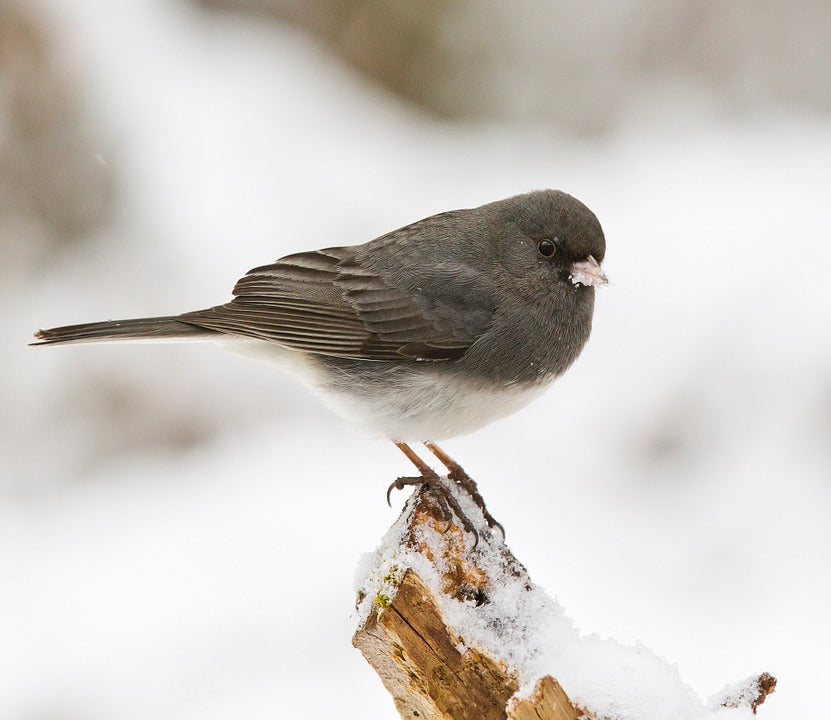Offer
Provide additional details about the offer you're running.
Provide additional details about the offer you're running.
Provide additional details about the offer you're running.

Voted as one of the bird watchers favourite winter birds by Birds & Blooms magazine, the dark-eyed junco is a common and energetic sparrow that is a delight to behold. These birds can be found throughout the continent of North America, stretching from sea to sea and covering most of the northern portion of the continent.
There are an estimated 630 million dark-eyed juncos and given the fact that their range is not terribly large, there are pockets of the population that are year-round residents and others that are migratory. An interesting trait of these birds that has been noted is that the wings of migratory members often measure longer than those who are year-round residents, as longer wings are naturally better suited for long flight patterns.
Where to Find the Dark-Eyed Junco
As we stated above, just about every resident of North America has an opportunity to spot one of these birds. These birds prefer coniferous or mixed-coniferous forests across Canada and the western United States but move into more open-air areas during the winter months. Look for them along roadways, field edges, and parks when the temperatures drop.
Identification
This medium-sized sparrow can vary slightly in colour depending on geographical location, but for the most part, sports a dark plumage. Their colouring can range from a dark grey to brown with white colouring in the tail feathers that can be seen while in flight. Their head is quite round and completed with a stout, pink-coloured bill.
Vocals
The males of this species have a strong set of vocal chords allowing their songs to be heard from several hundred feet away. Their two-second call is a trill that contains anywhere from 2-23 notes and is very similar to the song of the pine warbler. While the males do a large portion of the singing, females also take part in a quieter rendition of the song along with a variety of whistles, trills, and warbles.
High Quality Blend